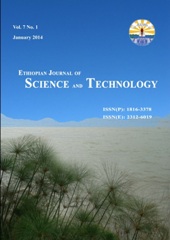Thermochemical conversion of underutilized lignocellulosic waste to syngas: Supercritical water gasification for value addition to corncob and sisal waste
Abstract
In the context of escalating global energy demands and environmental concerns associated with fossil fuels, this paper reports the conversion of underutilized agricultural residues in Tanzania, namely corncob and sisal waste, into syngas as sustainable biomass alternatives for energy production. Employing supercritical water gasification, the study evaluated the potential of corncob and sisal waste for syngas generation. Proximate analysis showed corncob as more suitable for energy conversion due to its lower moisture content (11.5%) and higher volatile matter (74.9%), compared to the higher moisture (14.9%) and ash content (17.2%) of sisal waste. However, the elemental analysis underscores both materials' feasibility for syngas production, with corncob and sisal waste showing substantial carbon and hydrogen contents, which are crucial for syngas. Despite the slight energy advantage of corncob indicated by its higher heating values (HHV: 25.44 MJ/kg, LHV: 24.40 MJ/kg) over sisal waste (HHV: 24.87 MJ/kg, LHV: 23.86 MJ/kg), reaction kinetics and syngas composition analysis suggested that both residues are viable feedstocks. Reaction kinetics analysis revealed temperature dependence in the conversion process, with higher temperatures favoring hydrogen production but increasing CO2 emissions, underscoring the need for a balanced approach in syngas production. The syngas produced composes of H2, CO, CH4, CO2, and light hydrocarbon gases. Moreover, the H2/CO of the syngas gas was less than 1, suggesting that this syngas would be suitable for oxo-synthesis, aligning with existing literature. Regression analysis highlights temperature as the most influential factor on Total Syngas Yield, with significant R-square values (0.992 for corncob and 0.944 for sisal waste). However, a paired sample T-test indicated no significant yield difference between corncob and sisal waste (t-value = -0.518, p-value = 0.626). These values implied that both feedstocks are equally effective in syngas production under the examined conditions. This observation suggested that feedstock selection can be flexible based on other factors such as availability and environmental impact. The findings contribute new insights into biomass-to-energy conversion, emphasizing the viability of agricultural residues as sustainable energy sources. It informs feedstock selection, balancing environmental impact and cost factors, and advocates for a shift towards a more sustainable, circular energy economy.
Copyright (c) 2025 Datius S. Revocatus, Naswibu A. Kasimu, Emanuel X. Ricky, Makungu M. Madirisha, Lilian D. Kaale, Noah M. Puline, Esther H. Lugwisha, Kessy F. Kilulya

This work is licensed under a Creative Commons Attribution-NonCommercial-NoDerivatives 4.0 International License.

